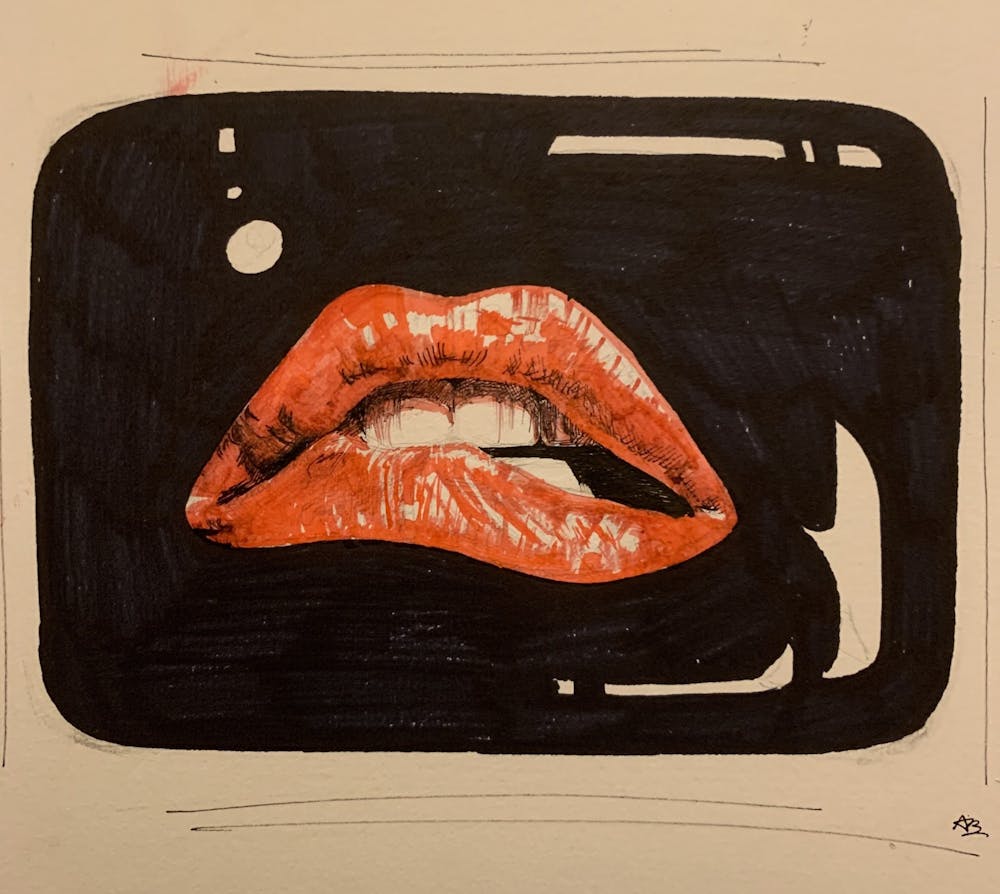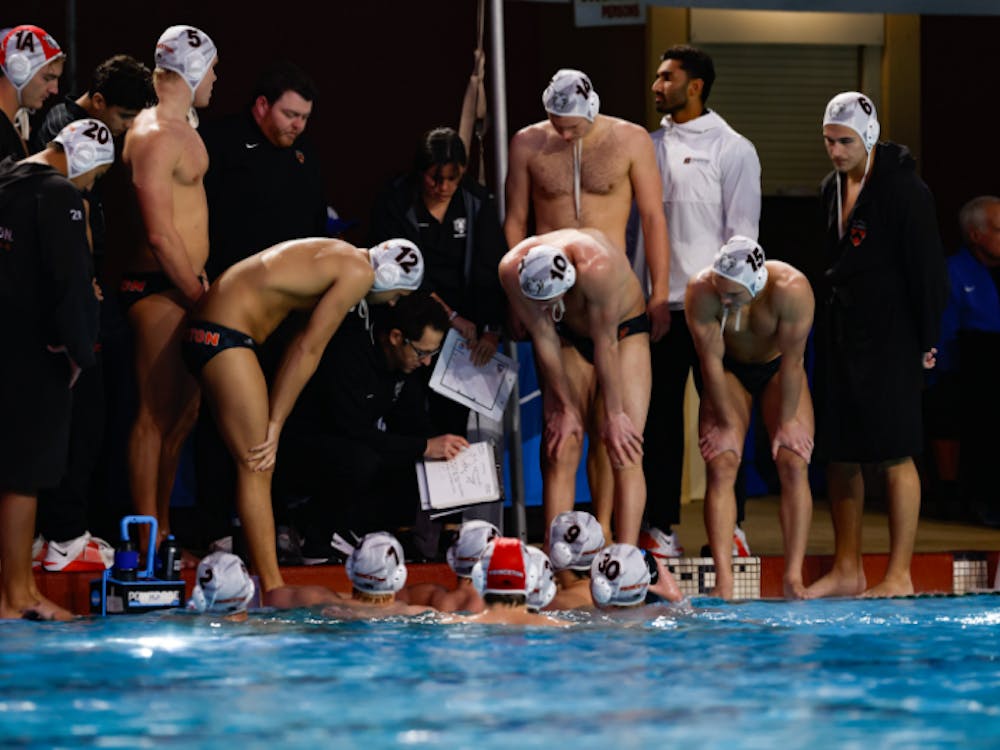“I would like, if I may, to take you on a strange journey,” invites the criminologist narrator at the beginning of “The Rocky Horror Picture Show.” As we have all embarked on the strange journey of transitioning to a life with COVID-19, so has theater, and along with it, the Princeton University Players (PUP) and Theatre Intime’s annual Halloween production of “The Rocky Horror Picture Show.”
A cult classic and satire of mid-20th century horror B-movies, “The Rocky Horror Picture Show” belongs to many genres, encompassing elements of musical, comedy, and horror. Based on Richard O’Brien’s musical “The Rocky Horror Show,” the movie tells the story of one very memorable night in the lives of Brad Majors and Janet Weiss, a newly engaged couple. The couple’s car breaks down during a storm, and the two are forced to take refuge at the mad scientist and “sweet transvestite from … Transylvania” Frank-N-Furter’s castle. The couple soon becomes swept up in the strange happenings at Frank-N-Furter’s house as sex, murder, and aliens proliferate.
Every year, PUP and Theatre Intime put on a shadow cast performance of “The Rocky Horror Picture Show,” where actors pantomime the actions of characters as the movie is projected onto a screen behind them. This year’s performance is directed by Grey Raber ’23 and stage-managed by Julia Elman ’23. Benjamin Ball ’21, Ian Johnson ’22, Anna McGee ’22, Ally Wonski ’22, Mel Hornyak ’23, Elliot Lee ’23, Rosemary Paulson ’23, Emily Della Pietra ’23, Ethan Hall ’24, and Miles Schaeffer ’24 make up the student cast, with McGee and Tanaka Ngwara ’24 serving as costume directors and Hornyak and Rhim Andemichael ’24 as technical directors.
Ball, McGee, and Raber serve as managing editor, chief copy editor, and staff copy editor at The Daily Princetonian, respectively.
For Raber, directing this year’s production of “The Rocky Horror Picture Show” was an opportunity to test the waters as a first-time director and help create a welcoming environment for other students, especially first-years. In last year’s production, Raber, then a first-year student, played the role of Columbia, and the production helped them find their community on campus.
“I think before that, I was struggling a lot with imposter syndrome, and being able to be around people who enjoyed the same things that I enjoyed and just have such a fun time with it really helped me feel at home,” Raber said in a conversation with the ‘Prince.’
Raber had agreed to direct early in the summer before Princeton had announced its decision for the fall semester, but even after learning that the performance would be virtual, they were still committed to putting on the performance over Zoom. It hasn’t come without its difficulties. Both Raber and Stage Director Elman laughed over trivial difficulties communicating directions to move left and right over Zoom, but the group has also faced more serious challenges from the limitations of the different actors’ access to technology and other resources. For one, Raber felt as though they had to make difficult decisions regarding how to balance the size of the screen-shared movie with the size of their actors’ Zoom boxes. Their biggest worry is that their actors will not receive the attention they deserve for their hard work.
Despite this limitation, other challenges regarding actors’ backgrounds and costumes have been met with creative solutions. The Costume Directors put together aesthetic boards and color palettes for the actors to identify items they own that could work for the performances. The group has also been experimenting with recording makeup tutorials for the actors and using different virtual backgrounds for different scenes. So far, only a few items have had to be shipped to actors — a single hat (for a character who, apparently, really needs a hat), a pearl necklace, and face paint.

“I think that [using what actors have around them] makes it even more fun because we’re creatively using what we have and making it work,” Raber said.
For potential audience members familiar with the intimate interactions that normally occur between the cast and audience at a live production of “The Rocky Horror Picture Show,” Raber and their team have worked hard to maintain this aspect of the performance. Although the audience cannot shout and throw things at the actors in person, viewers this year will be able to unmute themselves at different parts of the performance to shout different lines and will be allowed to turn on their videos to dance along during the popular musical number, “Time Warp.”
Raber cites their fellow peers in the Princeton theater community for providing support in the transition to a virtual performance. They brainstormed ideas both on their own and with others at PUP and Theatre Intime to test what does and doesn’t work over Zoom.
For Elman, who has worked on virtual theater performances both in the spring as a part of “The Renegade Storyteller,” an original musical by Richard Peng ’20, and over the summer, as Publicity Director for Princeton Summer Theater, adapting “The Rocky Horror Picture Show” to a virtual format has also required a learning curve. She praised Raber for their hard work and continued commitment to the project.

Although the cast and production team have only interacted with each other over Zoom this year, Raber was still able to build a strong sense of community. Schaeffer, a first-year who plays Frank-N-Furter, has found their Princeton community in the group, from the first audition where everyone “just hopped in a Zoom room, hung out together, and listened to the music” to regular rehearsals, dancing and working together over Zoom. Raber spoke of how Zoom’s chat function was a way for the cast to bond and talk during rehearsals. Raber, Elman, and Schaeffer also frequently used the word “fun” to describe their experience — they have all enjoyed working on the production thus far and hope the audience has fun watching.
“I want people to laugh … It’s not going to be the best production ever, it’s online, things are going to be laggy, but … [I hope the audience is] able to enjoy that and experience it in a new way,” Raber commented.
“The Rocky Horror Picture Show” also means something different to each of them. For Elman, it’s about community, having fun, and filling “a little bit of the theater shaped hole” in her. For Raber, the movie was “one of the first movies [they] … consumed where LGBTQ culture wasn’t stigmatized,” helping them “come out of [their] shell as a queer person.” For Schaeffer, it’s about the freedom of expression the movie invites.
Regardless of what it might mean to each person, this year’s production of “The Rocky Horror Picture Show” is proof that, in the words of Schaeffer: “Even in these difficult times, art and performance arts don’t stop. We’re going to keep going and pursuing and we’re going to make the best of our situation.”
Performances of “The Rocky Horror Picture Show” will take place on Oct. 30 at 10 p.m. EDT and Oct. 31 at 7:30 p.m. EDT with a costume contest beginning at 7 p.m. EDT. The Zoom link for the performances is available here, and the Interactive Manual can be found here.








